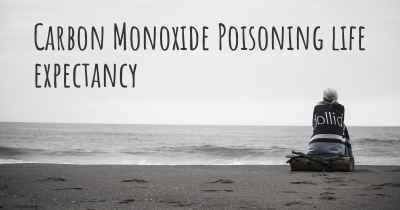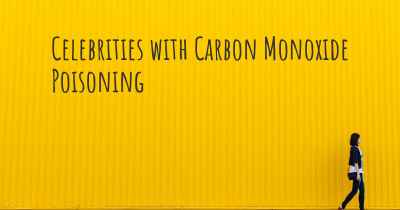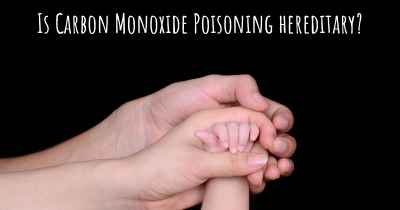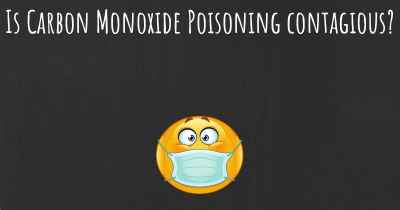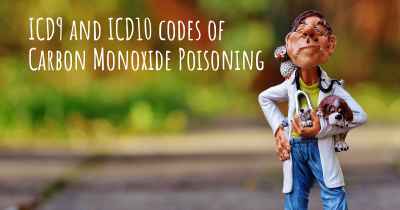Living with Carbon Monoxide Poisoning. How to live with Carbon Monoxide Poisoning?
Can you be happy living with Carbon Monoxide Poisoning? What do you have to do to be happy with Carbon Monoxide Poisoning? Living with Carbon Monoxide Poisoning can be difficult, but you have to fight to try to be happy. Have a look at things that other people have done to be happy with Carbon Monoxide Poisoning
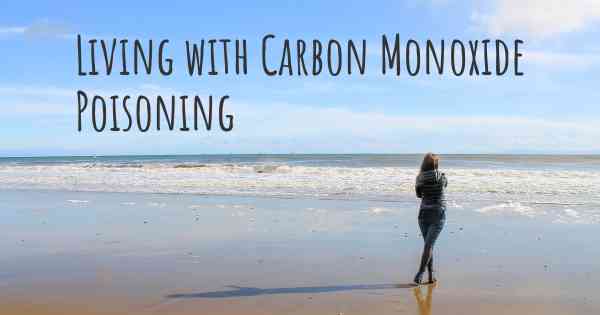
Living with Carbon Monoxide Poisoning
Carbon monoxide (CO) poisoning is a serious health condition that occurs when you inhale high levels of carbon monoxide gas. It can be caused by faulty heating systems, blocked chimneys, or using fuel-burning appliances in poorly ventilated areas. If you or someone you know is living with carbon monoxide poisoning, it is crucial to take immediate action to ensure safety and minimize the risks associated with this silent killer.
1. Seek Medical Attention
First and foremost, seek medical attention immediately. Carbon monoxide poisoning can have severe health consequences, including brain damage and even death. Call emergency services or go to the nearest hospital to receive proper treatment. Medical professionals will assess your condition and provide the necessary care to help you recover.
2. Identify and Eliminate the Source
Determine the source of carbon monoxide in your living space. It could be a malfunctioning furnace, gas stove, fireplace, or any other fuel-burning appliance. Once identified, turn off the appliance and ensure it is properly repaired or replaced by a qualified technician. Additionally, check for any blocked vents or chimneys that may be preventing the gas from escaping.
3. Install Carbon Monoxide Detectors
Install carbon monoxide detectors in your home. These devices are essential for early detection of carbon monoxide levels and can save lives. Place detectors near bedrooms and common living areas, following the manufacturer's instructions. Regularly test and replace the batteries to ensure they are functioning correctly.
4. Improve Ventilation
Enhance ventilation in your living space. Open windows and doors to allow fresh air to circulate and carry away any carbon monoxide present. If weather conditions permit, keep windows slightly ajar to maintain a constant flow of fresh air. Avoid using fuel-burning appliances in enclosed or poorly ventilated areas.
5. Educate Yourself and Others
Learn about the dangers of carbon monoxide poisoning and educate those around you. Understanding the symptoms, risks, and preventive measures can help you and others stay safe. Share this knowledge with family members, friends, and neighbors to raise awareness and prevent similar incidents from occurring.
6. Regular Maintenance and Inspections
Ensure regular maintenance and inspections of fuel-burning appliances. Schedule professional inspections to identify any potential issues and ensure proper functioning. Regularly clean chimneys, vents, and filters to prevent blockages and improve airflow. Follow manufacturer guidelines for maintenance and adhere to recommended service intervals.
7. Be Mindful of Symptoms
Pay attention to symptoms of carbon monoxide poisoning. Headaches, dizziness, nausea, confusion, and shortness of breath are common signs. If you experience any of these symptoms or suspect carbon monoxide exposure, evacuate the premises immediately and seek medical help.
8. Create an Emergency Plan
Develop an emergency plan for carbon monoxide incidents. Discuss with your household members what to do in case of a carbon monoxide leak. Establish a meeting point outside the house and practice the evacuation procedure regularly. Ensure everyone knows how to contact emergency services.
9. Avoid Risky Practices
Avoid risky practices that can lead to carbon monoxide poisoning. Never use fuel-burning appliances for heating purposes, such as using a gas stove or oven to warm your home. Do not operate generators or charcoal grills indoors. These practices significantly increase the risk of carbon monoxide exposure.
10. Stay Informed
Stay informed about carbon monoxide safety guidelines. Keep up-to-date with local regulations and recommendations regarding carbon monoxide detectors, ventilation requirements, and maintenance procedures. Being aware of the latest information will help you maintain a safe living environment.
Living with carbon monoxide poisoning requires immediate action, medical attention, and preventive measures to ensure your safety and well-being. By following these steps, you can minimize the risks associated with carbon monoxide exposure and create a safer living environment for yourself and your loved ones.
